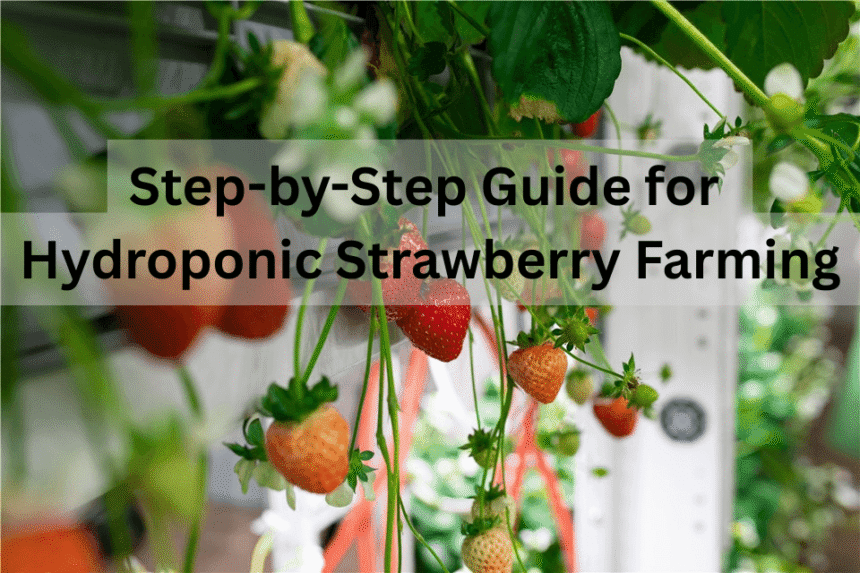Hydroponic strawberries are transforming modern agriculture, allowing for fresh, premium-quality berries year-round, regardless of climate or region. This guide explores every crucial detail—from key advantages and how these strawberries are grown, to system choices, plant care, market insights, and sustainability.
What Are Hydroponic Strawberries?
Hydroponic strawberries are strawberries cultivated without soil; their roots thrive directly in a nutrient-rich, water-based solution instead. This technology mitigates the traditional challenges of soil farming—such as pests, inconsistent conditions, and soil-borne diseases—by providing precise control over every aspect of the environment.
How Hydroponic Strawberry Systems Work
Several strawberry hydroponic system designs are utilized, each with distinct benefits:
-
Deep Water Culture (DWC): Plants are suspended with roots bathed in oxygenated nutrient solution.
-
Nutrient Film Technique (NFT): A thin flow of nutrient solution circulates over roots in sloped channels.
-
Drip Systems: Delivers nutrients directly to each plant’s base for precision feeding.
-
Substrate Growing: Inert media like coconut coir or perlite anchor roots, providing water retention and nourishment.
Selecting the right system depends on available space, budget, technical expertise, and scale—while even beginners can start small, commercial growers often opt for advanced vertical and multi-level NFT setups for maximum yield.
Key Advantages of Hydroponic Strawberries
Hydroponically grown strawberries offer several compelling benefits:
-
Year-Round Production: A controlled indoor environment overcomes seasonality, supporting fresh harvests any time.
-
Space Efficiency: Vertical setups utilize small footprints, suiting urban and greenhouse growing.
-
Water Conservation: Hydroponic systems use 70–90% less water than traditional soil farming, recirculating moisture and nutrients.
-
Fewer Chemicals: Reduced pests and diseases mean less reliance on pesticides or fungicides.
-
Higher Yields: Multi-tier setups can yield up to twice as much fruit per area compared to conventional farms.
Selecting Hydroponic Strawberry Varieties
Not every strawberry plant is equally suited for hydroponics. Recommended varieties include:
-
Albion: Renowned for sweetness and high yields.
-
Seascape: Valued for disease resistance and consistent fruiting.
-
Everbearing types: Provide continual fruit throughout the growing cycle.
Setting Up Your Hydroponic Strawberry System
1. Choosing the System
Start with user-friendly systems like DWC or NFT. Substrate-based options (using coconut coir, perlite, or rockwool) often offer the best blend of support, aeration, and moisture retention.
2. Nutrient Solution
The nutrient solution is the lifeblood of any hydroponic system. It must be carefully balanced with macronutrients—nitrogen, phosphorus, potassium—and essential micronutrients such as iron, magnesium, and calcium.
-
Regularly test solution pH (optimal: 5.8–6.5) and electrical conductivity (EC) to maintain optimal plant health.
-
Change and replenish solution as needed for sustained growth.
3. Environmental Controls
Strawberries thrive in:
-
Temperature: 60–80°F (15–27°C)
-
Humidity: ~60%
-
Lighting: 14–16 hours/day via sun or LED grow lights
-
Good ventilation: Prevents heat, mold, and excess humidity.
Music and automated sensors can monitor and adjust these factors, ensuring optimal, consistent growth.
Essential Care for Hydroponic Strawberry Plants
-
Pruning and Training: Regularly prune runners and train stems for vertical or horizontal growth, amplifying fruit output and light exposure.
-
Trellising: Support maturing plants to prevent overcrowding and improve harvest ease.
-
Pest Management: Use integrated pest management (IPM) and maintain cleanliness to keep common pests and diseases at bay.
Record-Keeping and Monitoring
Detailed tracking of planting dates, varieties, nutrient recipes, and environmental conditions helps optimize future crops and improve yields.
The Commercial Edge: Profitability and Trends
Hydroponic strawberry farming is rapidly expanding due to strong demand for out-of-season, pesticide-free, and high-quality berries. Some operations report premium yields (up to 12.5 kg per square meter), high profit margins, and fast capital payback when leveraging automation and direct-to-retail sales.
International brands like Driscoll’s and Oishii are leading hydroponic cultivation, proving that vertically farmed strawberries can rival—even surpass—the flavor, aroma, and consistency of field-grown produce.
Sustainability and Eco-Impact
Hydroponic farming dramatically lowers water and land usage while enabling urban agriculture on otherwise non-arable land. Many hydroponic facilities utilize renewable energy and avoid harmful farm runoff, supporting a cleaner and more sustainable food future.
Certification and Regulation
Hydroponic strawberries often meet stringent food safety, hygiene, and quality standards more easily than soil-grown crops. They are sometimes eligible for organic certification in the US, though rules differ internationally.
High Authority Reference
For detailed scientific protocols and crop guides, refer to the Crop Guide: Strawberry from Haifa Group, a leader in agronomic best practices.
Hydroponic strawberries open a pathway to consistent, tasty, and sustainable berries regardless of outside climate or soil quality. By understanding system options, balancing nutrients, tailoring plant care, and integrating new technology, anyone—from home gardeners to commercial producers—can join this rewarding agricultural revolution.








